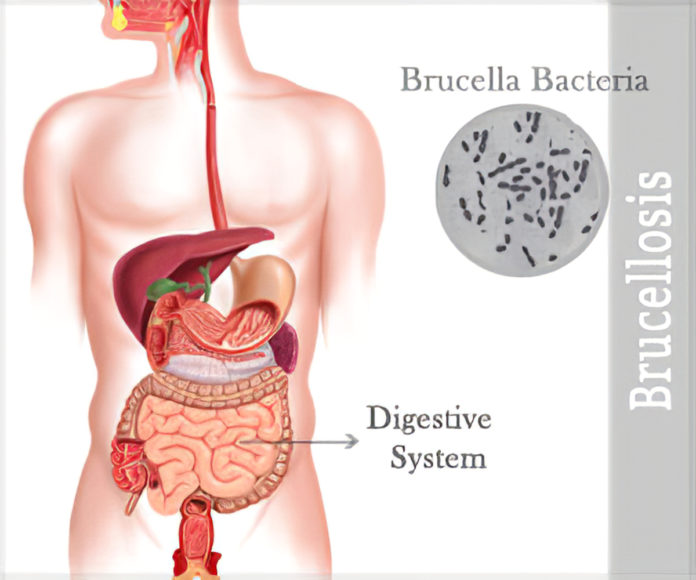Brucellosis is an infectious disease caused by bacteria that spreads from animals to people.
You can catch brucellosis if you consume unpasteurized milk, cheese, or other dairy products from an infected animal.
While rare, it's also possible to catch the disease through the air or through direct contact with infected animals.
Causes and Risk Factors of Brucellosis
Brucellosis is caused by the bacteria Brucella, which humans may contract from infected animals or contaminated animal products.
The most common ways humans contract the disease is by:
- Eating raw dairy products contaminated by Brucella
- Inhaling air contaminated by Brucella
- Having an open wound and touching blood or body fluid of infected animals
The majority of brucellosis cases are caused by eating contaminated food products such as:
- Improperly pasteurized milk
- Improperly pasteurized cheese
- Raw meat
How Is Brucellosis Diagnosed?
Your doctor will confirm a diagnosis of brucellosis by running tests that look for the bacteria in samples of blood or other bodily fluids.
This often requires a biopsy of your liver tissue or bone marrow and the involvement of other medical specialists.
If your doctor suspects you have complications due to brucellosis, they may order additional tests:
- X-Rays This can help your doctor see changes in your bones and joints.
- MRI or CT Scans Your doctor uses these to check for inflammation in the brain or other areas.
- Echocardiography This image of your heart allows your doctor to check for signs of damage.
- Cerebrospinal Fluid Culture This test looks for infections like meningitis and encephalitis.
Treatment and Medication Options for Brucellosis
If you test positive for brucellosis, your doctor will most likely prescribe antibiotics.
The antibiotics doxycycline (Vibramycin and others) and rifampin (Rifadin) are often prescribed together for at least six to eight weeks.
Be sure to tell your doctor if you're:
- Pregnant
- Allergic to doxycycline or rifampin
- Immunosuppressed (due to a drug or medical condition)
Prevention of Brucellosis
Brucellosis is best prevented by avoiding undercooked meat and unpasteurized dairy products, including cheese, milk, and ice cream.
Complications of Brucellosis
Left untreated, brucellosis can cause possible complications in organs throughout your body:
- Endocarditis This is an infection of the heart’s inner lining. It is the leading cause of death due to brucellosis.
- Arthritis You may experience pain, stiffness, and swelling in your knees, ankles, wrists, hips, and spine.
- Inflammation of the Spleen and Liver This may be caused by an infection that causes the spleen and liver to become inflamed and enlarged.
- Epididymo-orchitis This is inflammation and infection of the testicles, which can cause painful swelling.
- Infections of the Central Nervous System These may include meningitis (inflammation of brain membranes) and encephalitis (inflammation of the brain itself), both of which can be life-threatening.
Related Conditions and Causes of Brucellosis
Resources We Love
Centers for Disease Control and Prevention (CDC)
The CDC, a national public health institute, has detailed and up-to-date information on brucellosis and other infectious diseases. On its website, learn how to reduce your risk of brucellosis, plus potential treatment options.
National Organization for Rare Disorders (NORD)
NORD is a patient advocacy organization committed to the identification, treatment, and cure of rare diseases. Its website has further information on the symptoms, causes, and treatments for brucellosis.
Additional reporting by Cathy Cassata.
Editorial Sources and Fact-Checking
- Brucellosis. Centers for Disease Control and Prevention. March 8, 2019.
- Brucellosis: Symptoms and Causes. Mayo Clinic. September 12, 2019.
- Brucellosis. National Organization for Rare Disorders. 2009.
- Brucellosis. World Health Organization. July 29, 2020.
- Foodborne Germs and Illnesses. Centers for Disease Control and Prevention. March 18, 2020.













































